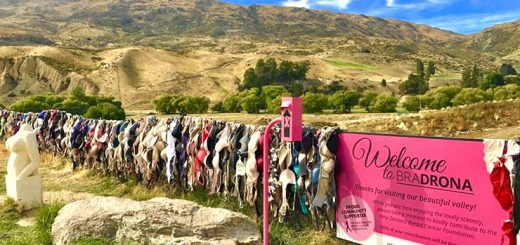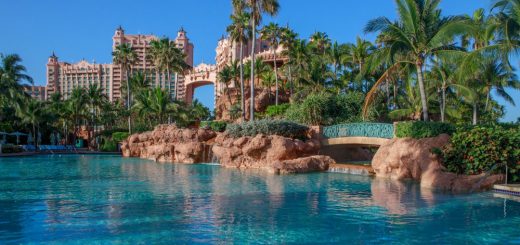Travel attractions and holiday advices in Alanya by tourmoni.com
Best rated Alanya travel destinations and vacation tips and tricks: Temple of Apollo ruins at Side: The ancient ruins scattered around the small town of Side are only 64 kilometers to the northwest of Alanya so can be easily visited as a day trip. Side is a small but busy waterfront resort with a very touristy bazaar area winding through the old town district that leads down to a harbor front area. There are plenty of cafés and restaurants strung out along the shore here, so if you’re planning on ticking off Aspendos as well on your day trip, this is the best place to stop for lunch. The main area of ancient ruins is just opposite the inland entrance to Side’s old town district. This is where you’ll find Side’s imposing 2nd-century Roman Theater, which holds seating for up to 20,000 spectators. This is one of Turkey’s most remarkably well-preserved Roman theaters and the town’s most dramatic tourist attraction. Don’t miss visiting Side Museum, which is set in a Roman bathhouse across the road from the theater entrance. Afterwards, make sure to explore the rambling area of ruins incorporating the Agora and the Temple of Tyche that sits just to the east of the theater. Once you’ve wandered through this archaeological site, head into the old town itself and stroll up to the harbor. Read additional info at https://www.tourmoni.com/alanya-excursions.
Alanya’s port for tourist cruises and diving excursions is defended to the south by Kızılkule, and is as good a place as any to potter around and see where your curiosity takes you. Along the water there’s a promenade, hemmed by gardens with palms, lawns and topiaries. There are lots of spaces to just park up and soak up the views out to sea, down to the castle or up to the Taurus Mountains, a constant, imposing presence all along the coast. You’ll never be far from a cafe for a hit of Turkish coffee, and for the best views you can walk along the harbour’s south arm to ponder Alanya and its mountainous hinterland. You may want to spend a whole day descending into the clear waters off Alanya. This experience is open to divers of all experience levels, and includes hotel pick-up and boat trips from the harbour to two dive sites, with a cooked lunch aboard the yacht on the way to the second site.
Laodicea is located right across the ancient city of Hierapolis. It was once a trade city which was known with glossy black wool and eye salve trade. Mentioned in the Book of Revelation as the luke warm city. Recently Turkish archaeologists excavated a church dating to the time of Constantine. This is thought to be one of the earliest churches of the world. This site is recommended for biblical history lovers. Aphrodisias is 3 hours drive from Kusadasi town. Aphrodisias is derived from the goddess named as Aphrodite, the goddess of love. An artisan city known with sculpturors who made sculptures and sarcaphaguses with the local white marble. You can see the best examples of marble works in this city. The site has the most well preserved ancient stadium in the world which has a capacity of 30.000 people. The huge pool at the south agora is breathtaking.
Dim Cave is 145 km from Antalya and 11 km from Alanya, in the town of Kestel. Dim Cave stands out as a karst formation and creates a mysterious atmosphere. It’s one of the countless natural beauties around Alanya. This place attracts a lot of attention from tourists who want to discover beauties around Alanya. The cave is located in the perfect place for nature walks, in the upper part of Dim valley. You can hike the valley, absorbing the fresh smell of pine trees and marvelous scenery on your way to Dim Cave. Dim Cave is one of the most beautiful caves in Turkey. Its total length is 410 meters and a 360 meter section is open to visitors. The lightning system inside makes the stalactites and stalagmites very delightful all along the way. The colorful lighting creates a fabulous atmosphere inside the cave.
The Alanya Seljuk Shipyard stands south of the Red Tower. You can easily reach it on foot by following the 300 meter path. The Alanya Seljuk Shipyard was built by the Seljuks in 13th century. If you are into maritime history and medieval buildings, make time to visit the only remaining shipyard in Turkey from the Seljuk Period. The Alanya Seljuk Shipyard (Tersane) has been used for trade and protection purposes throughout history. Today, it stands upright back to back with Red Tower. The Alanya shipyard is the only shipyard that remains from the Seljuk reign, built in the first half of 13th century.
Trajan Fountain, M.S. It was built between the years 102-114 in the name of Roman Emperor Trajan and Artemis of Ephesus. The original architecture of the fountain, which has 2 floors, was later restored and rebuilt as a single-staired. Some of the sculptures in the fountain are exhibited today in the Ephesus Museum and some in the British Museum. The fountain used to be Rome’s most famous fountain, we also can see that within its architecture which includes lots of engravings on the columns.
Harbor-side, both the Red Tower (Kızılkule) and Seljuk Shipyard (Tersane) are extensions of Alanya castle fortifications, built in the 13th century. The octagonal, 30-meter-high Red Tower served as the harbor’s defense tower in the Seljuk era. Inside, there are exhibits on the Red Tower’s and Alanya’s history, but you’re really here to climb up to the roof for great views across the harbor front. From the tower, a pretty walkway runs along the harbor’s original fortification walls to Turkey’s only remaining example of a Seljuk-era shipyard. The arched halls here, built into the shorefront, are open to the sea, so that waves constantly pummel the stone. The walkway continues from here for a short length along the coastline to a small Seljuk-era watchtower building. See extra details at https://www.tourmoni.com/.
Alanya’s emblem is a 13th-century Seljuk defensive tower, getting its name from the red brick that makes up the structure’s upper storey and parapet. The Red Tower has an octagonal footprint and climbs to 33 metres with marble blocks on its lower walls. This rare piece of Medieval defensive architecture was constructed to protect Alanya’s harbour and shipyard, and greeted people’s arrival to the city for many centuries. There’s a cistern inside, still able to collect rainwater, and you can make out the historic siege-repelling murder holes, through which boiling water and pitch would be dropped on helpless invaders. On the first floor is a small ethnographic museum with tools and handicrafts reflecting the Turkmen culture in the Taurus Mountains.








